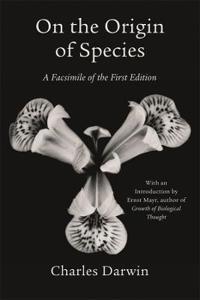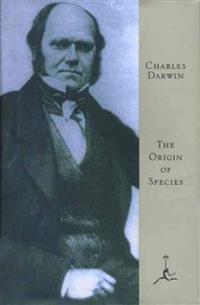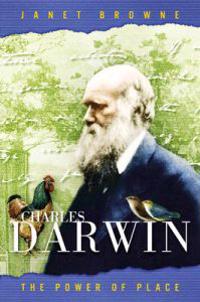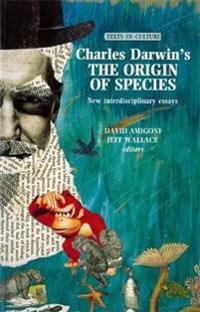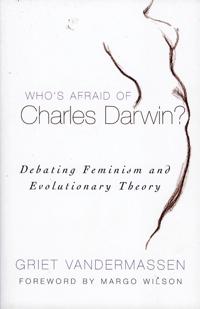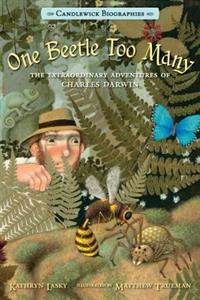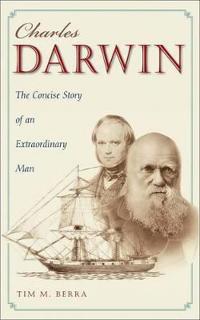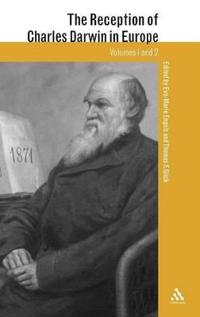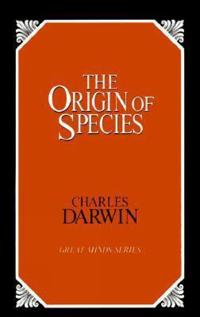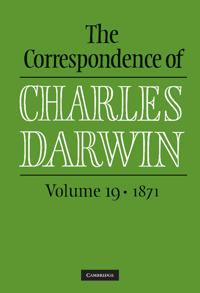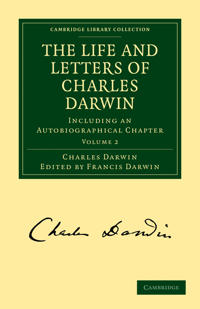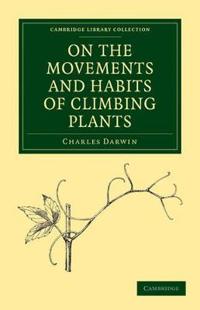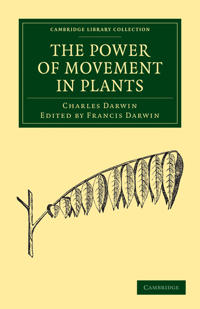The Origin of Species (Häftad)
avCharles Darwin
ISBN: 9780553214635 - UTGIVEN: 1999-06It was sold out on its first day of publication in 1859. It is the major book of the last century and remains the most readable and accessible of all the great revolutionary works of the scientific imagination. It beguiled then and still does today. Darwin's aim was to show the probability that ever[...]
Charles Darwin
ISBN: 9780670063352 - UTGIVEN: 2010-10All his life, Charles Darwin hated controversy. Yet he takes his place among the Giants of Science for what remains an immensely controversial subject: the theory of evolution. Darwin began piecing together his explanation for how all living things change or adapt during his five-year voyage on HMS [...]
On the Origin of Species (Häftad)
avCharles Darwin
ISBN: 9780674637528 - UTGIVEN: 197507It is now fully recognized that the publication of Darwin's "Origin of Species" in 1859 brought about a revolution in man's attitude toward life and his own place in the universe. This work is rightly regarded as one of the most important books ever published, and a knowledge of it should be part of[...]
The Origin of Species (Inbunden)
avCharles Darwin
ISBN: 9780679600701 - UTGIVEN: 199405"Origin of Species" is still one of the most controversial works of science and it is one of the most outstanding works of science in the 19th century. The studies made by Darwin during the voyage of the HMS Beagle form a large part of the basis for this work. As early as 1837, Darwin's notes descri[...]
Descent of Man and Selection in Relation to Sex, The (Pocket)
avCharles Darwin
ISBN: 9780691023694 - UTGIVEN: 1981-08-01Charles Darwin: The Power of Place (Häftad)
avE. Janet Browne
ISBN: 9780691114392 - UTGIVEN: 200309In 1858, Charles Darwin was forty-nine years old, a gentleman scientist living quietly at Down House in the Kent countryside. He was not yet a focus of debate; his "big book on species" still lay on his desk as a manuscript. For more than twenty years he had been accumulating material for it, puzzli[...]
Charles Darwin (Häftad)
avJanet Browne
ISBN: 9780712668378 - UTGIVEN: 2003-08This concluding volume of Charles Darwin's biography looks closely at the wider publishing world of Victorian England and the different audiences which responded to Darwin's ideas. It considers the Darwinian revolution from his point of view and what it was like to become a scientific celebrity.[...]
Charles Darwin's the Origin of Species (Pocket)
avDavid Amigoni, Jeff (EDT) Wallace, David Amigoni
ISBN: 9780719040252 - UTGIVEN: 1995-03This volume marks a new approach to a seminal work of the modern scientific imagination: Charles Darwin's The Origin of Species (1859). Darwin's central theory of natural selection neither originated nor could be contained, with the parameters of the natural sciences, but continues to shape and chal[...]
Who's Afraid of Charles Darwin? (Häftad)
avGriet Vandermassen, Griet Vandermassen, Margo Wilson
ISBN: 9780742543515 - UTGIVEN: 200501Why should feminism and the biological sciences be at odds? And what might be gained from a reconciliation? In Who's Afraid of Charles Darwin? Vandermassen shows that, rather than continuing this enmity, feminism and the biological sciences-and in particular evolutionary psychology-have the need and[...]
Charles Darwin (häftad)
ISBN: 9780750284752 - UTGIVEN: 2014-09This title describes the life and career of Charles Darwin, including an account of his famous voyage and explanations of his theories of evolution and the origin of species, concluding with an analysis of his legacy and contribution to science. The science behind his theories and discoveries are ex[...]
Charles Darwin: pocket GIANTS (häftad)
ISBN: 9780752499406 - UTGIVEN: 2014-08When Darwin announced his theory of evolution by natural selection, he did more than transform biology. Before his great work, humans were comfortably different from other life, a special creation. By showing how life on Earth evolved, Darwin told us that humans too are part of nature. His decisive [...]
One Beetle Too Many: The Extraordinary Adventures of Charles Darwin (Häftad)
avKathryn Lasky, Matthew Trueman
ISBN: 9780763668433 - UTGIVEN: 2014-03A lively text and captivating images tell the story of the ever-curious boy who grew up to make one of the most significant discoveries of our time.
From the time Charles Darwin was a boy, he was happiest when he was out alone collecting specimens (especially beetles). And despite his father's e[...]Charles Darwin (Inbunden)
avTim M. Berra
ISBN: 9780801891045 - UTGIVEN: 200810Two hundred years after Charles Darwin's birth (February 12, 1809), this thoroughly illustrated, yet concise biography reveals the great scientist as husband, father, and friend. Tim M. Berra, whose "Darwin: The Man" lectures are in high demand worldwide, tells the fascinating story of the person an[...]
Reception of Charles Darwin in Europe (Inbunden)
avEve-marie Engels
ISBN: 9780826458339 - UTGIVEN: 200902This volume covers Darwin's reception across Europe and his influence on European science and culture.Charles Darwin is a crucial figure in nineteenth-century science with an extensive and varied reception in different countries and disciplines. His theory had a revolutionary impact not only on biol[...]
Origin of Species (Häftad)
avCharles Darwin
ISBN: 9780879756758 - UTGIVEN: 1991-05Since its publication in 1859, "The Origin of Species" has been the focal point of debate. Darwin's analysis of flora and fauna calls into question the long-held concepts of spontaneous generation, divine creation, and the unrelatedness of many species. Instead, he argues for Natural Selection: spec[...]
Darwin's Plantation: Evolution's Racist Roots (Häftad)
avKen Ham, A. Charles Ware, Todd A. Hillard
ISBN: 9780890514979 - UTGIVEN: 2008-02The Dark Side of Charles Darwin: A Critical Analysis of an Icon of Science (Häftad)
avJerry Bergman
ISBN: 9780890516058 - UTGIVEN: 2011-03The Correspondence of Charles Darwin
ISBN: 9781107016484 - UTGIVEN: 2012-05This pivotal volume in the definitive edition of Charles Darwin's letters covers the year 1871, the year in which Descent of Man, Darwin's first public statement on human evolution, was published. The large number of letters in this year - more than 800 - reflects the excitement this caused. Darwin [...]
The Correspondence of Charles Darwin
ISBN: 9781107180574 - UTGIVEN: 2017-01This volume is part of the definitive edition of letters written by and to Charles Darwin, the most celebrated naturalist of the nineteenth century. Notes and appendixes put these fascinating and wide-ranging letters in context, making the letters accessible to both scholars and general readers. Dar[...]
The Life and Letters of Charles Darwin
ISBN: 9781108003452 - UTGIVEN: 2009-07This book, the second of three-volumes detailing the life of Charles Darwin, published five years after his death, was edited by his son Francis, who was his father's collaborator in experiments in botany and who after his death took on the responsibility of overseeing the publication of his remaini[...]
On the Movements and Habits of Climbing Plants (Häftad)
avCharles Darwin
ISBN: 9781108003599 - UTGIVEN: 200907Initially published by the Linnean Society, this 1865 essay was Darwin's first foray into the study of climbing plants. He was inspired to produce this work by a paper on the tendrilled Cucurbitacean plant by American botanist Asa Gray, with whom he had a firm intellectual friendship. Darwin examine[...]
The Power of Movement in Plants (Häftad)
avCharles Darwin
ISBN: 9781108003605 - UTGIVEN: 200907Written in collaboration with his son Francis, a notable botanist, this 1880 book builds on Darwin's earlier investigations into climbing plants, orchids, insectivorous plants, flower variety, and the processes of fertilisation. This detailed study of many species from seed to mature plant further d[...]
The Descent of Man and Selection in Relation to Sex (Pocket)
avCharles Darwin
ISBN: 9781108005098 - UTGIVEN: 2009-07In his introduction, Darwin reveals that for many years he had no intention of publishing his notes on this topic, 'as I thought that I should thus only add to the prejudices against my views'. By 1871, he felt that his fellow scientists would show a greater openness of mind to his arguments, even w[...]
The Expression Of The Emotions In Man And Animals (Pocket)
avCharles Darwin
ISBN: 9781108061834 - UTGIVEN: 2013-01-05Published in 1872, this is the culmination of Darwin's extensive research into the shared features of human and animal expression.[...]
The Correspondence of Charles Darwin
ISBN: 9781108423045 - UTGIVEN: 2018-03This volume is part of the definitive edition of letters written by and to Charles Darwin, the most celebrated naturalist of the nineteenth century. Notes and appendixes put these fascinating and wide-ranging letters in context, making the letters accessible to both scholars and general readers. Dar[...]



